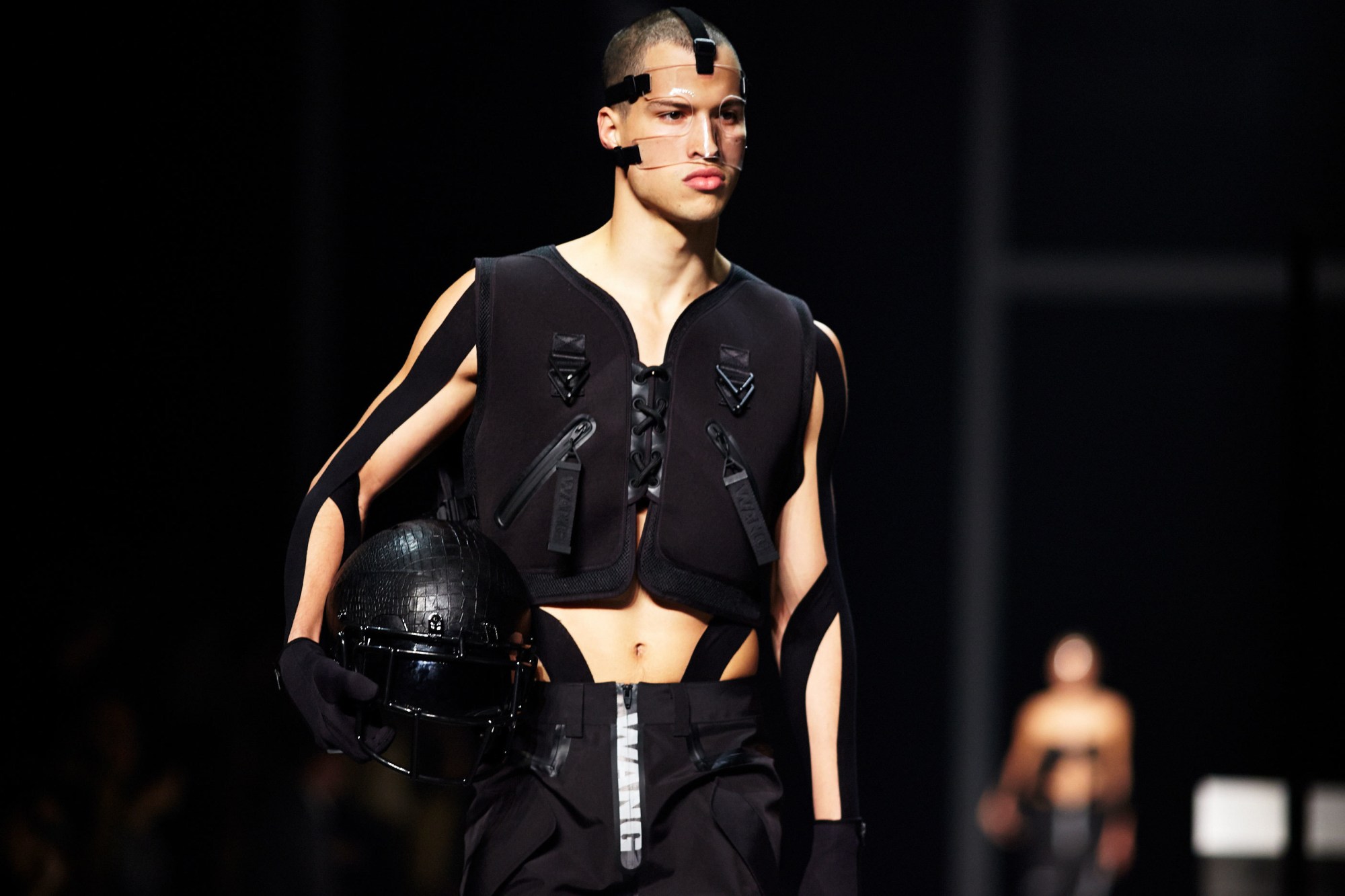“We brought the leather jogging pant to Fendi six years ago and they said no. [Now] how many motherf***ers you done seen with a leather jogging pant?” Kanye West, September 2013
If it were possible to pinpoint a moment when activewear and high fashion officially consummated their relationship, it may have been during the radio interview in which Kanye West famously took credit for coming up with the idea of combining a luxurious material and a sporty silhouette. His pronouncement was met with a variety of bewildered responses, ranging from those who agreed (while shaking their heads at his relentless ego) and those—like late night TV host Jimmy Kimmel—who were not yet convinced that a leather jogging pant was ever a thing at all.
Well, sorry h8ers, but Kanye was right. He was not only right to pitch the combo in 2008, but his inkling has been proven even more true since his interview last year, as the high fashion and activewear categories have continued to converge, creating, by this point, their own bona fide genre. The most recent example can be found in the fanfare surrounding Alexander Wang’s high-low collabo with H&M (which featured sport-influenced elements ranging from parkour to boxing) at its New York City launch event in October. It’s trickled up to even the highest-end labels: that same month, Chanel opened a “gym” inside Bergdorf Goodman, and created an advertisement in which Cara Delevigne gazes at the viewer in the reflection of a gym’s mirror.
At this point we know it’s a real trend, but we don’t really know why the fashion crowd—once thought of as sweat-averse people—have come to embrace the lifestyle so thoroughly.A few theories:
Wolves in pret-a-sporter
Let’s examine 2008, when imported leather and $20 sweatpants swirled, then combined in Kanye West’s mind. It was the year of the economic collapse, and the financial sector’s epic fail inspired the “Wall Street Shame” phenomenon, which included a distaste for ostentatious style. Suddenly, it seemed a lot less desirable to look obviously rich. For those who actually had money, it associated them with the catastrophe. And for those who didn’t have any money…well, who would want to look like an immoral one-percenter? Just like that—t-shirts, sweats and jeans went from humble to admirable.
But, there was a catch to all of this. Shamed as they may have been, Wall Street guys (and many people who benefitted from their greed) didn’t really want to adjust their lifestyles. They just wanted to blend in until people got mad about something else. Those t-shirts? Silk blend. The sweatpants? Cashmere. But you’d never know unless you took a peek at the fabric tag on the inside of the garment.
Cool kid appropriation
This take is clearly linked to Normcore – the idea that millennials have reacted to the overly individualist culture in which they grew up with a desire to wear non-fashion that blends in. (First reported on by Fiona Duncan for The Cut, based on K-Hole‘s original trend report.) But think of it this way: for lots of current “cool kids” in fashion, they probably perceived themselves as deeply uncool during high school. Now as an adult, it’s fun to be freed from the social trappings of high school and to wear the jock’s go-to uniform in far grander fashion.
Sneakers to match your green juice
For many people, weekend hangouts have transitioned from dive bars to SoulCycle, and with this mass interest in self-improvement over self-destruction, comes a change in the way we dress.This year Ralph Lauren unveiled a Polo shirt with biometric tracking capabilities. And on top of this, ease just sometimes takes priority – it’s easier to glide to the train station in a pair of leggings and Nike Free Runs instead of the cumbersome fashion things you zipped yourself into before.
We’ll likely look back at this era when luxury activewear reigned supreme; a time when people no longer had to choose between function and fashion; when sports tech fabrics weren’t just for the gym; when we could finally wear sweatpants to the airport, rather than doing a mile high change into them.
Credits
Text Mallory Rice
Photography Barbara Anastacio
